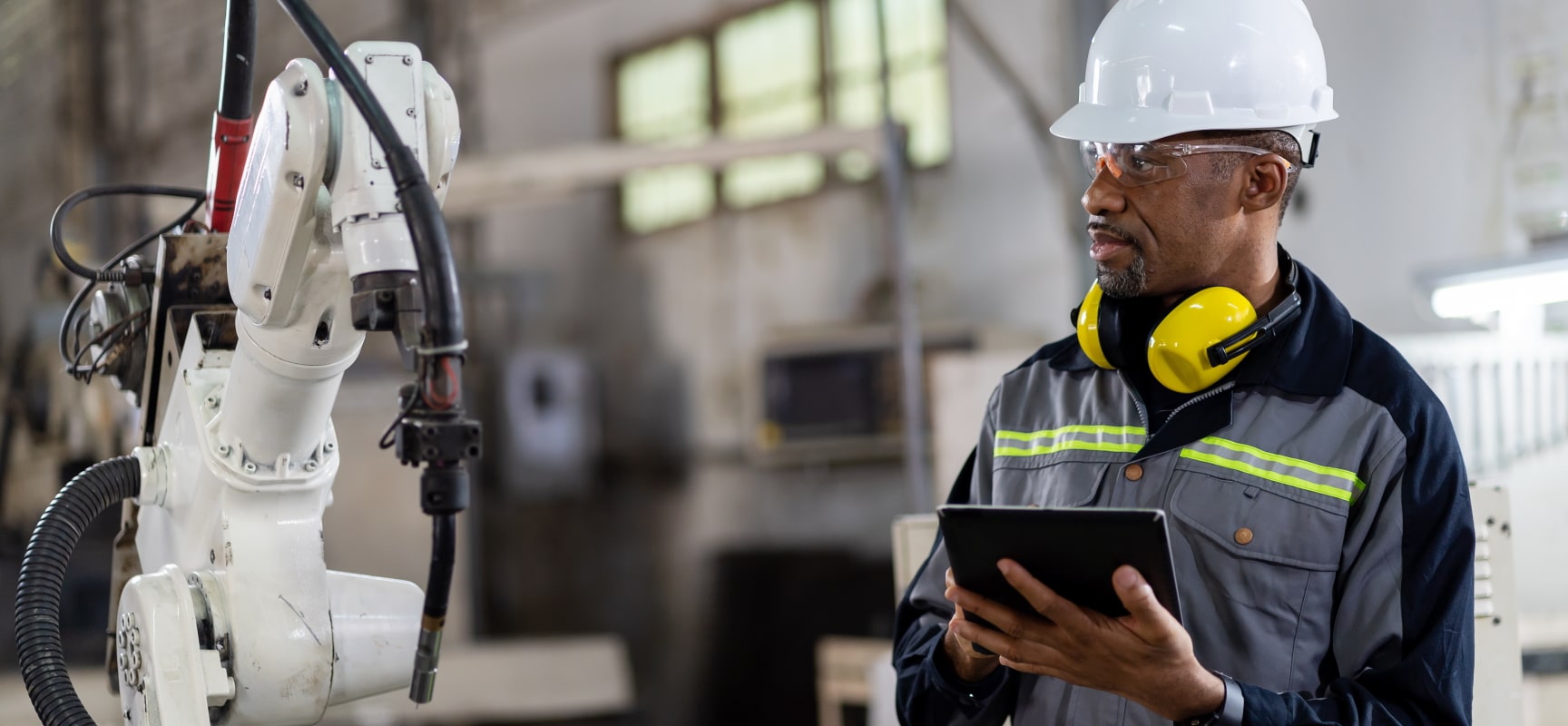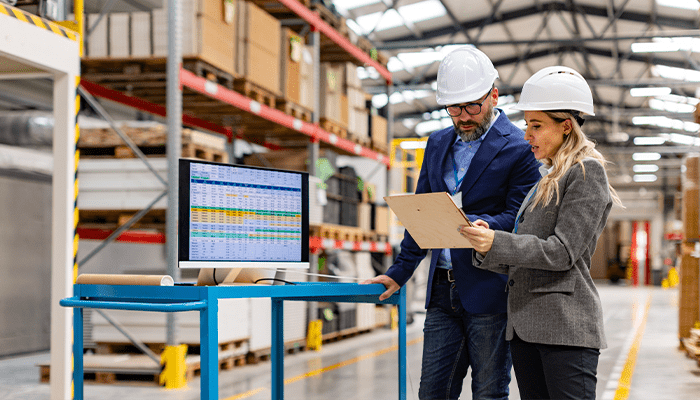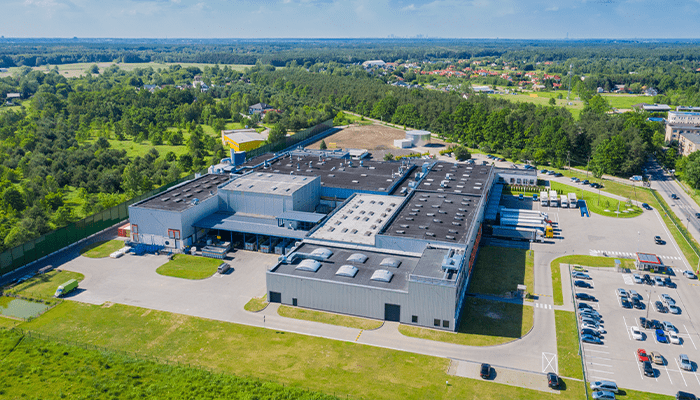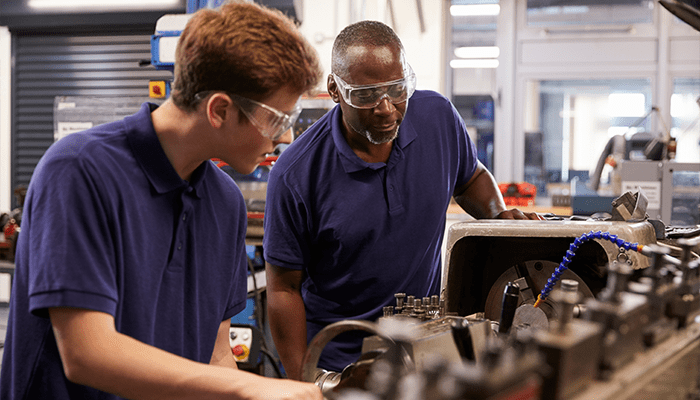
The Manufacturing Evolution from Industry 1.0 to industry 5.0
How has manufacturing progressed from the first industrial revolution (Industry 1.0) to where it is today, commonly referred to as Industry 5.0? The industry has come a long way since the late 18th century, when the Industrial Revolution started, and it continues to evolve.
Industry 1.0 (Late 18th century)
- Mechanization: The 1st industrial revolution (Industry 1.0) shifted from manual labor to a more mechanized manufacturing facility. The textile industry played a pivotal role in this transition, with the introduction of the spinning jenny, which increased productivity and launched Industry 1.0.
- Steam Power: The introduction of the steam engine provided a more reliable power source for both the manufacturing industry and the transportation industry.
- Factory System: As cities grew and people moved from rural areas to take jobs in factories in urban areas, the industry moved from a decentralized industry to a more mechanized centralized industry.
- Impact on Society: Associated with economic growth and an increase in production, the First Industrial Revolution had profound social and economic effects, leading to growth of industrial cities, creation of a working-class, and significant changes in labor practices.
Industry 2.0 (late 19th to early 20th century)
- Electricity: Steam power was replaced with electricity as a source of energy because it was more versatile and flexible, and it allowed for the creation of more efficient and flexible machinery. Electric lighting also had a profound impact on work environments and extended working hours.
- Communication: The invention of the telegraph and, later, the telephone significantly improved long-distance communication, making it easier for businesses to coordinate operations across distances and increasing the speed of information exchange.
- Internal Combustion Engine: The internal combustion engine powered the growth of the automotive and transportation industries, which, combined with the development of the assembly line, transformed transportation, making it faster and more accessible.
- Mass Production and Assembly Line: Innovations in manufacturing, particularly the introduction of the assembly line, streamlined production processes. Assembly line techniques, popularized by figures like Henry Ford, allowed for the mass production of goods, significantly reducing production costs. The concepts developed by Henry Ford are the basis of the Toyota Production System or Lean Manufacturing in today’s manufacturing environment.
Industry 3.0 (Late 20th Century)
- Computerization: As computers became more proliferate and robust, the manufacturing industry embraced them for use in data processing, control systems, and automated decision-making.
- Automation: The increased use of automation in manufacturing, where machines and robots began to take over repetitive and dangerous tasks, led to increased efficiency and reduced the need for manual labor in certain processes. This was certainly a catalyst for the continued integration of automation in industry 4.0 applications.
- Electronics: Electronics grew, allowing the manufacturing industry to use electronic components/systems in various industrial systems, including sensors, microcontrollers, and other electronic devices used for monitoring and controlling machinery and processes.
- PLCs (Programmable Logic Controllers): The development and use of PLCs allowed for the control of machines and processes through programming, reducing the need for manual adjustments and human intervention in many cases.
Industry 4.0 (Late 20th Century to Today)
- Internet of Things (IoT): The sensors and devices introduced in the Industry 3.0 era were now connected to the Internet to collect and exchange data, allowing for real-time monitoring and control.
- Big Data and Analytics: The collection and analysis of large volumes of data generated by IoT devices and other sources is used to gain insights, identify patterns, and make data-driven decisions.
- Artificial Intelligence (AI) and Machine Learning: AI saw the introduction of machine learning, which is used to make autonomous decisions, predict issues, optimize processes, and enhance product quality.
- Automation and Robotics: Robots and automation are integrated into several manufacturing processes. Although robotics were introduced during the Industry 3.0 Era, the improved operation allowed for a more integrated use of robotics, including autonomous robots that can handle tasks like material handling, packaging, and even some aspects of product assembly.
- Digital Twins: Creating virtual replicas of physical systems or products, which allow for simulation and analysis. Digital twins are used for predictive maintenance, product design, and process optimization.
- Cloud Computing: Cloud-based systems provide a centralized platform for data storage and access. This facilitates collaboration, scalability, and real-time data sharing across different locations.
- Cybersecurity: With increased connectivity, cybersecurity becomes a critical concern. Protecting data and systems from cyber threats is a significant aspect of Industry 4.0.
- Augmented Reality (AR) and Virtual Reality (VR): These technologies are used for training, remote maintenance support, and visualization of complex processes and systems.
- Additive Manufacturing (3D Printing): The use of 3D printing for rapid prototyping and production, allowing for more flexible and efficient manufacturing processes.
Industry 5.0 (The next generation)
Industry 5.0 is seen as the next generation of manufacturing, although some higher-tech manufacturing companies have begun to adopt the concepts. What do experts believe will be adopted in Industry 5.0?
- The Human Factor: The 5th industrial revolution will see a rise in the use of cobots or collaborative robots where humans work beside robots throughout the manufacturing process. Cobots are more easily programmed and can do repetitive, dangerous work, while operations that are more suitable for people to perform are completed in tandem with the robots. People will be employed to be problem solvers and use their cognitive abilities, leading to new roles, requirements, and training and education needs.
- Plant Process Management (PPM): Industry 4.0 brought digitization and AI into PPM; Industry 5.0 will bring a collaboration. Digitization allows for collecting large amounts of data, and AI enables multiple scenarios to be identified based on the data. With Industry 5.0, people will use their knowledge and insight into the process to provide the ultimate decision and maintain the overall responsibility of the plant operation.
- Mass Personalization: The market will shift, and consumers are expected to require more customization than in the past. Industry 4.0 was focused on cost reduction via technology, with some focus on customization. Industry 5.0 will move this to the forefront of manufacturing by using advanced technologies to allow for on-demand customized manufacturing.
- Sustainability: Industry 5.0 will have the manufacturing industry emphasize renewable energy sources, as manufacturers look to design energy-efficient processes that reduce their carbon footprint.
The progression from Industry 1.0 to Industry 4.0 represents a continuous evolution of technology and industrial practices, each building upon the innovations of the previous era. Industry 4.0 is a culmination of digital technologies and automation with the potential to transform industries by improving efficiency, flexibility, and productivity. Industry 5.0 is building on the methodologies introduced in 4.0, while emphasizing people in conjunction with technology.
It is important to recognize that the size and scale of manufacturers who have implemented Industry 4.0 and are moving towards Industry 5.0 are large-scale multinational organizations. Small manufacturing companies remain largely in the 3.0 era while working towards implementing Industry 4.0 tools. The small manufacturers must overcome the costs associated with many of the technologies to not only be competitive but to be a sustainable business.
Featured News & Insights

Artificial intelligence is no longer a futuristic concept. For manufacturers, it is a practical tool already delivering measurable results in efficiency, quality, and risk management. That was the...

Manufacturers who import raw materials remain concerned about tariffs and their potential impact on costs and supply chain stability. While there’s no one-size-fits-all solution to reduce risk, there...

Business risk broadly refers to the potential for losses or operational disruptions stemming from internal or external factors. These factors may include market changes, regulatory compliance issues,...